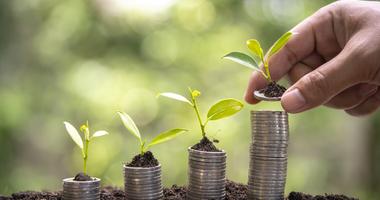
What are Green Bonds and How Can They Fight the Climate Crisis?
Green bonds work like regular bonds. But they specifically are meant to finance projects with positive environmental impacts.
6 min read
By Georgie Wilson, Science and Solutions Intern
The climate crisis is a fast-growing problem for our world, and one of the key issues we face today is finding the money to finance solutions. At the most recent UNFCCC Conference of Parties (COP 28), climate finance was a crucial point of discussion.
One of the most publicized climate finance developments out of COP 28 was the establishment of a Loss and Damage Fund to address the unavoidable impacts of climate change felt in developing countries.
Along with the Loss and Damage Fund, international leaders recognized the importance of providing long-term financial stability in facing the climate crisis.
This focus spilled over to initiatives outside of, but complimentary to, the COP. One of these efforts was the creation of the Joint Declaration and Task Force on Credit Enhancement for Sustainability-Linked Sovereign Financing for Nature and Climate.
What does this mean for climate finance? In essence, it works to support long-term financing solutions for emerging countries instead of short-term debt assistance that solely relies on international development support.
This is where we find green bonds at the heart of debt financing opportunities to face climate change.
What are Green Bonds?
“Green bonds are financial instruments that finance green projects and provide investors with regular or fixed income payments,” according to the World Bank. They serve as a type of capital-raising mechanism that a variety of financial institutions – including the International Finance Corporation (IFC), the World Bank’s private sector arm - and sovereign nations use for debt financing.
These green bonds work like regular bonds, as they are typically linked to an asset and backed by a bank’s balance sheet. However, they specifically are meant to finance projects with positive environmental impacts.
While green bonds are often seen as identical to climate bonds, green bonds offer a broader spectrum of instruments related to environmental projects. Climate bonds on the other hand, specifically are bonds that finance projects to reduce carbon emissions or adapt to climate change impacts.
The first green bond transaction occurred in 2007 following a report from the Intergovernmental Panel on Climate Change (IPCC) showing global warming and human activity linkages. This data inspired a collective of Swedish pension funds to work to invest in “green” or climate-focused projects that same year. The research done by the pension funds’ bank led them to the World Bank and soon after, success came in 2008 when the World Bank issued the first official “green bond,” which served as a benchmark for the green bond market as it set defined criteria for green bond projects and included impact reporting as a key standard.
Since 2008, the green bond market has taken off and been growing as a financing option throughout the world. The Climate Bonds Initiative launched the Climate Bond Standard in 2010 as a transparency standard for the green bond market, with the first corporate and municipal green bonds being issued soon after in 2013.
As green bond issuance gained volume, the Green Bond Principles (GBP) were established in 2014 by the International Capital Market Association to ensure credibility for green bond issuers by promoting transparency guidelines for the use of green bond proceeds. While it is not mandatory to abide by the GBP, many issuers adhere to these guidelines in order to certify the green bonds are viable.
Despite the growth of green bonds in the past 10 years, geopolitical events like the COVID-19 pandemic, Russia's war in Ukraine, and rampant inflation shocked international capital markets. Global bond issuance took a hit, with the first-ever fall to $877 billion USD in general green, social, sustainability, and sustainability-linked (GSSS) bonds in 2022.
However, annual issuance of impact bonds rebounded to $939 billion in 2023, with green bond sales from corporations and governments growing to its highest annual issuance volume of $575 billion.
How do these transactions work?
“Issuers often develop a green bond ‘framework’ in support of their environmental and sustainability objectives and then apply this framework to issue multiple bonds,” the Department of Energy says.
The projects eligible for green bonds will most often be described in a pre-issuance report that details its alignment with the Green Bond Principals, has science-based goals, and is certified with a standard similar to the Climate Bond Standard.
As the green bond is a longer-term debt instrument, this means that the issuer, or creator, of the bond must have a strong balance sheet and a high credit rating. In order to ensure high ratings with strong financial backing, green bond issuers are usually well-established and publicly traded corporations or municipalities.
Once the green bonds are sold to raise the capital for environmental projects, issuers are responsible for managing the use of proceeds to adhere to the objectives of the green bond. Whether the issuers directly fund projects or pay for service agreements to have another entity run the project, issuers will usually release public post-issuance reports to account for the use of funds.
Within green bonds, there are a variety of different intricacies concerning the types of proceeds and the party who is responsible for the debt; however, the basic structure and requirements for these green bonds remain consistent.
The Pros and the Cons
“GSSS markets are central to international progress on climate change because they are the most effective mechanism for ensuring private capital is allocated to developing economies,” the International Finance Corporation says.
For emerging market economies, green bonds offer a form of sustainable finance from a variety of multilateral institutions that earlier would have been deemed too risky for private investors.
However, green bonds are still a relatively new idea in the financial world, and a large risk that comes with this new form of green finance is greenwashing. Despite the Green Bond Principals and Climate Bond Standard, there are no universal requirements or universally recognized standards for determining how environmentally-friendly a bond is. There is also a risk that governments or companies may not conduct the proper due diligence on the projects backing these green bonds, and this responsibility may even fall on the investors.
Banks and other green bond issuers have worked to mitigate greenwashing through annual impact reports, as seen from multilateral institutions like the International Finance Corporation. However, identifying the “greenness” of a green bond is not a perfect process, and so green bond issuers usually rely on external rating agencies as well as the Green Bond Principals to ensure the bonds truly support sustainable projects.
Despite the risks that come with green bonds, this finance mechanism will continue to become more effective as it becomes normalized in international capital markets. Since the United Nations-sponsored “Principles for Responsible Investment” in 2006, over 5,000 financial institutions have signed onto these guidelines.
“Green bonds raise awareness for the challenges of climate change and demonstrate the potential for institutional investors to support climate-smart investments through liquid instruments without giving up financial returns,” says the World Bank.
Whether it be for a wind farm, biodiversity conservation, or energy efficient public transit systems, green bonds have potential to grow further as a pivotal financing mechanism for emerging markets in the fight against climate change.
What happens next?
As we continue working on climate solutions in 2024, the green bond market is a key piece of the puzzle that must be demystified.
With more green bonds being issued every year, emerging economies are being exposed to additional financing opportunities that may have the potential to position them as leaders in the climate space!
Ready to learn more about the future we’re reaching for? Join us in New York City this April for a training event unlike any other.
From April 12-14, take bold climate action, join forces with fellow environmental advocates, and make sure all of our voices are heard in demanding a cleaner, greener future at our latest Climate Reality Leadership Corps training.
Be part of the movement for a better tomorrow. Join us in NYC this April.




